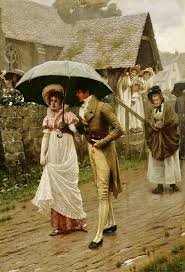
The Regency Era is a remarkable period in British history that has left a lasting impression on culture, fashion, literature, and social dynamics. Spanning from 1811 to 1820, this era is named after the Prince Regent, who ruled during the madness of King George III. The Regency Era is often celebrated for its elegance and dramatic shifts in societal norms, which were reflected in the arts, politics, and daily life. This article aims to provide a thorough examination of the Regency Era, highlighting its key characteristics, cultural significance, and enduring legacy.
Table of Contents
Historical Overview of the Regency Era
To understand the Regency Era, it’s essential to consider the historical context that shaped this fascinating time. The period was marked by significant political upheaval and social change, which influenced the lifestyle and attitudes of the people living in Britain.
The Political Climate
The Regency Era was characterized by political instability stemming from the Napoleonic Wars. Britain was embroiled in conflict with France, leading to economic strain and widespread hardship. The Prince Regent, George IV, took control in 1811 due to his father’s mental illness, and his reign was marked by extravagance and excess, contrasting sharply with the struggles faced by ordinary citizens. This duality of wealth and poverty became a defining feature of the Regency Era, influencing both literature and social commentary.
Social Changes and Class Dynamics
The Regency Era saw significant shifts in social hierarchies. The rise of the middle class, driven by industrialization and economic change, began to challenge the traditional power of the aristocracy. This newfound wealth allowed the middle class to engage in cultural pursuits, such as attending theaters and reading novels, which were previously reserved for the elite. The evolving social landscape was crucial in shaping the cultural output of the time.
Fashion During the Regency Era

Fashion is one of the most iconic aspects of the Regency Era, characterized by its elegance and classical influences. The styles of this period reflect the broader cultural shifts and the changing roles of women.
Women’s Fashion
Women’s fashion during the Regency Era was defined by simplicity and grace. The empire silhouette became immensely popular, with high waistlines and flowing fabrics that emphasized a woman’s figure without constricting it. Muslin dresses, often adorned with intricate embroidery, became a staple of female wardrobes. The trend moved away from the elaborate styles of the previous decades, emphasizing natural beauty and femininity.
Accessories and Social Significance
Accessories played a vital role in Regency Era fashion. Bonnets, gloves, and shawls were not just practical items; they were essential for conveying social status. The choice of fabric and design could indicate wealth and taste, while the act of dressing became a social ritual. The rise of evening balls and social gatherings meant that women used fashion to assert their identities and showcase their social standing.
Men’s Fashion
Men’s fashion in the Regency Era was equally striking, featuring tailored coats, waistcoats, and breeches. The emphasis on a well-fitted silhouette marked a departure from the more flamboyant styles of earlier periods. Cravats and neckties became essential accessories, allowing men to express individuality. The sophisticated styles of the time mirrored the social aspirations of the upper and middle classes.
Literature of the Regency Era
The Regency Era was a golden age for literature, producing some of the most enduring works in the English canon. This period saw the rise of the novel as a popular form, characterized by its exploration of social themes and personal relationships.
Jane Austen’s Influence
Jane Austen is perhaps the most celebrated author of the Regency Era. Her novels, including “Pride and Prejudice,” “Sense and Sensibility,” and “Emma,” provide keen insights into the social dynamics of her time. Austen’s sharp wit and astute observations about marriage, class, and gender relations resonate with readers even today. Through her characters, she explored the tensions between societal expectations and personal desires, making her work timeless.
The Gothic Novel
The popularity of the Gothic novel also flourished during the Regency Era. Authors like Ann Radcliffe and Matthew Lewis captivated audiences with tales that combined romance, horror, and mystery. These stories often featured strong, independent heroines and explored themes of power and vulnerability, reflecting the societal tensions of the time. The Gothic genre’s popularity speaks to the era’s fascination with the sublime and the unknown.
Arts and Culture of the Regency Era
The Regency Era was a time of artistic flourishing, with significant developments in painting, music, and theater. This cultural explosion was fueled by the desire to escape the grim realities of political strife and war.
Visual Arts
In visual arts, the Regency Era produced notable figures such as J.M.W. Turner and John Constable. Turner’s dramatic landscapes captured the power and beauty of nature, while Constable’s serene depictions of rural life offered a contrast to the chaos of the city. Their works are celebrated for their innovative use of light and color, reflecting the Romantic ideals that permeated the period.
Music and Performance
The music of the Regency Era also saw significant advancements, with composers like Beethoven and Mendelssohn making their mark. The period’s theaters flourished, presenting a mix of comedies, tragedies, and operas. Playwrights such as Richard Brinsley Sheridan delighted audiences with their witty dialogues and engaging plots, showcasing the vibrant cultural life of the time.
The Impact of the Regency Era on Modern Culture
The Regency Era has had a profound and lasting impact on contemporary culture, influencing literature, film, fashion, and social norms. Its themes of romance, class, and individuality continue to resonate with audiences today.
Adaptations in Film and Television
The allure of the Regency Era has inspired countless adaptations in film and television. Modern adaptations of Austen’s works have brought the elegance and complexities of the period to life for new audiences. These adaptations often highlight the tensions between personal desires and societal expectations, making the stories relatable across generations.
Fashion Revivals
The influence of Regency Era fashion can still be seen in contemporary clothing. Elements such as empire waistlines and delicate fabrics occasionally resurface in formal wear, particularly in bridal collections. The timeless elegance of Regency Era styles continues to inspire designers, ensuring its place in the fashion narrative.
Literary Influence
The literary contributions of the Regency Era have also left a lasting mark. Authors today continue to draw inspiration from the themes and characters of this period. The exploration of social norms and the complexities of human relationships remain central to many contemporary works, demonstrating the enduring relevance of the Regency Era in literature.
Social Structures and Gender Roles

The Regency Era was a time of evolving social structures, particularly concerning gender roles. Women’s rights began to emerge as a topic of discussion, setting the stage for future movements.
The Role of Women
During the Regency Era, women’s roles were largely confined to the domestic sphere. However, the period also saw the beginnings of a shift as women began to seek education and autonomy. The burgeoning middle class provided women with new opportunities for engagement in social and cultural activities, leading to a gradual change in perceptions of women’s capabilities.
Literary Reflections of Gender Dynamics
Many authors of the Regency Era, including Austen, used their works to critique the limited roles available to women. Through their characters, they highlighted the struggles for autonomy and the desire for meaningful relationships, making powerful statements about gender dynamics that continue to resonate today.
Also read Ontpress .com Unlocking Digital Solutions for Your Business
Conclusion
The Regency Era was a transformative period that shaped British society and culture in profound ways. From the political climate to the evolution of fashion and literature, this era encapsulates a unique blend of elegance and social change. Its influence can still be felt today, reminding us of the enduring power of art, literature, and social evolution.
As we continue to explore the complexities of the Regency Era, we uncover valuable insights into the human experience, highlighting themes of love, class, and the quest for identity. The legacy of the Regency Era serves as a testament to the resilience of creativity and the importance of societal progress, ensuring that this remarkable period remains relevant in our collective memory.




